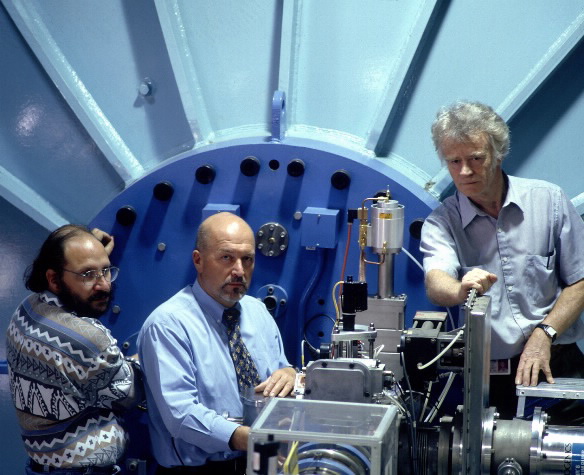Tiny samples of wax may help reveal the truth about the Spanish conquest of the Inca Empire more than 450 years ago.
 |
| ANSTO's 10MV tandem accelerator ANTARES (Australian National Tandem Research Accelerator) is a state-of-the-art facility for ion beam analysis (IBA) and accelerator mass spectrometry (AMS) |
Researchers at ANSTO have dated the wax samples for Italian historians investigating the conquest of Peru by Francisco Pizzaro in the early 1530s.
Together, the researchers are revealing a tale of murder and intrigue far bloodier than historians have ever suspected. That tale features amazing characters - the mysterious Incas, the conquistadors themselves and an heroic Jesuit priest who faked his death to protect himself.
One of the samples dated by ANSTO was sealing wax from a letter from Francisco de Chaves, a conquistador and chronicler on Pizarro's expedition. The letter, dated August 5, 1533, was addressed to the King of Spain, Carlo V. In it, Francisco de Chaves says that the Inca King Atahuallpa had agreed to go to Spain to honour Carlo.
But Pizarro feared that the defeated king would reveal to the Spanish monarch the atrocities committed during the conquest.
Pizarro had Atahuallpa assassinated by strangulation, and his generals poisoned with arsenic-laced wine, the letter says.
The account departs markedly from the long-held version of the event - that Atahuallpa was put to death for ordering the execution of his brother and rival for the title of Inca.
For reasons that remain unclear, the letter never reached Carlo V. However, it passed eventually into the hands of the Jesuit priest, Blas Valera, who took up the pen to document the crimes the conquerors had committed.
Some historians believe that Blas faked his death in 1599 and began writing under false names. If they are right, Blas is the author of a complex history of the conquest, Nueva Coronica y Buen Gobierno, written sometime before 1618. He attached Francisco de Chaves letter as proof of his claims.
He also wrote an account of his actions, titled Exsul Immeritus, dated May 10, 1618. This
account was found with a wax box containing other documents. It was from this box that the second sample dated by ANSTO was taken.
The documents somehow found their way into a Spanish library but their import was not recognised until they were rediscovered last century. They passed into private hands, and now belong to Neapolitan historian Clara Miccinelli, who has joined forces with University of Bologna Professor of Precolumbian Studies, Laura Laurencich-Minelli, to study them.
As part of attempts to authenticate the documents, Laurencich-Minelli sent the wax samples to ANSTO's Physics Division for radiocarbon dating on the Antares tandem accelerator.
Antares, a giant mass spectrometer so powerful it can detect one specific atom in a thousand million million, is one of just a few such instruments in the world.
It has hit the headlines in recent years when it has been used to date important antiquities, including the crown of the first Holy Roman Emperor, Charlemagne.
The sealing wax sample from Francisco de Chaves 1533 letter to Carlo V was dated to between 1429 and 1483.
"The wax would have been formed sometime before the letter was written so our dates are in the correct ballpark," Dr Zoppi said.
Two dates were obtained for the wax receptacle found with the documents. The dates came in at between 1445 and 1511 or between 1600 and 1616, with the earlier range more likely.
"The dates for all the wax samples look great," Dr Zoppi said.
The results, announced by Dr Zoppi at a recent conference in Rome, are expected to cause a storm in the historical and scientific communities world-wide.
"Of course, our dates alone do not authenticate the documents or verify their contents," said Dr Claudio Tuniz, Director of ANSTOs Physics Division.
"But they certainly support the argument that the documents are real, and that the conquest was far more violent than previously imagined."
Published: 21/05/1999

